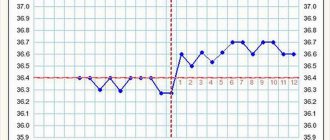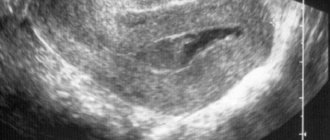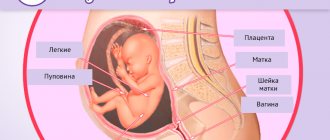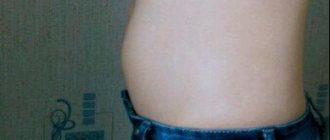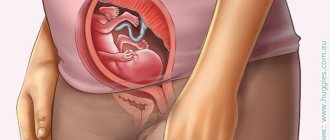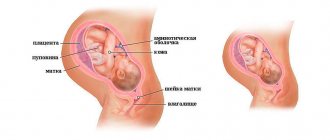Nipple changes during early pregnancy
Even before the delay of menstruation, most women notice a change in the color of the nipples, their size, as well as halos around them. This is one of the first signs of hormonal changes that occur during pregnancy. The changes are not dangerous for the expectant mother and fetus; they are a natural process.
What they look like
The appearance of the mammary glands during pregnancy undergoes pleasant changes:
- breast volume increases;
- the skin becomes firmer and more elastic.
The nipples do not change for the better: they become darker, rougher, and sometimes peeling occurs. This is necessary to prepare for the process of breastfeeding as intended by nature.
Changes in the appearance of the breasts require monitoring by a doctor managing the pregnancy. When individual lumps appear, an ultrasound of the mammary glands is necessary.
Is there a change in halo color?
The color of the areola usually changes with the shade of the nipples. At the beginning of pregnancy, the halo remains unchanged, but towards the end of the pregnancy it acquires a brownish-purple hue. Some women experience no such changes and the appearance of their breasts remains unchanged. Often, at the beginning of pregnancy, the halo becomes a pale purple hue, which is not considered a pathology.
Is there any discharge from the nipples?
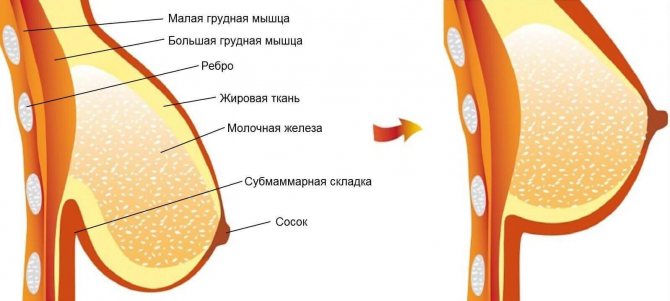
In some cases, the appearance of nipple discharge can be observed by the end of the 11th week, which is also not a pathology. You should definitely inform your doctor about the appearance of colostrum so that he can examine your breasts. Discharge from the nipples of a green hue with a foul odor requires urgent consultation with a doctor and is not considered normal.
When do Montgomery tubercles appear, at what time?
Montgomery tubercles are small bulges on the halo, not exceeding 1-1.5 mm in diameter. They often become pregnancy companions and often remain with the woman after childbirth. Their appearance can be detected at any time, most often in the second trimester. This is a normal phenomenon and does not require special attention. It is prohibited to try to squeeze out these formations or remove them in any other way. This can lead to serious consequences.
Normally, the tubercles do not cause a woman discomfort in the form of itching, peeling or other manifestations of pathology.
Changes in the nipples during repeated early pregnancy
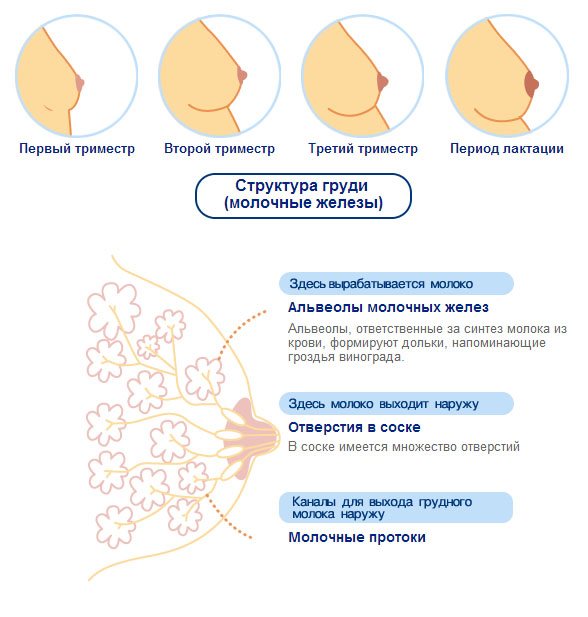
Changes in the nipples occur with every pregnancy, but the timing of changes in color and sensitivity may vary. The process occurs individually for each woman; if in the first pregnancy darkening and soreness appeared immediately, then in the second pregnancy symptoms may appear closer to the 2nd trimester.
When areolas of a pregnant woman's nipples darken?
The area around the nipple changes greatly during pregnancy. The areolas darken and increase significantly in size. When will darkening of the areolas become noticeable? Everything here is individual. On average, the color change of the areolas around the nipples occurs at 5 weeks of pregnancy.
If you read reviews on forums for expectant mothers, you can conclude that some women’s areolas darken at 6 weeks, others at 8 weeks, and there are pregnant women whose nipples begin to darken only after 8 weeks.
Reliable fact: nipples darken during pregnancy in all women. In the early stages, the darkening of the areolas is not so noticeable. With each week of pregnancy, this area becomes darker and eventually reaches a peak of dark brown color.
Some pregnant women note that in late pregnancy their nipples become similar to the nipples of dark-skinned women. Changes in nipple pigmentation occur due to hormonal changes in the pregnant woman’s body and active deposition of melatonin. Lack of folic acid, vitamin D, and stress can accelerate the process of darkening of the areolas and give the nipples a darker color.
Can nipple halos darken not due to pregnancy?
There are many reasons why nipples darken. The main one is pregnancy. We'll tell you about the rest now.
So, why nipple halos may darken:
- during the transition period from one age to another (from a teenager to a girl, during menopause);
- hereditary factor : if a mother’s nipple halos darken at a certain age, then her daughter may also experience this phenomenon;
- Pigmentation can be caused by hormonal disorders that appear due to illness or stress. Purple or blue nipples can occur with some medical conditions;
- The cause of increased pigmentation of the nipples may be the use of hormones (contraceptive drugs);
- , an incorrectly selected bra can affect the color of the nipples
Nipple changes during late pregnancy
In late pregnancy, the skin of the nipples becomes significantly rougher, sensitivity decreases, and colostrum may appear. The tubercles can cover the entire surface of the areola, reaching 12-15 on each breast. Any changes should be shown to the doctor managing the pregnancy. Severe nipple pain at the end of pregnancy should alert the expectant mother.
What nipples look like before childbirth
Immediately before childbirth, nipples usually do not bother the expectant mother. Their appearance remains unchanged since the beginning of the last trimester, and the pain and discomfort goes away. Closer to the birth of the baby, you should start hardening them - walking around the house without underwear more often, taking air baths. A contrast shower will help prepare the nipples and breasts as a whole for feeding.
What causes color changes
The change in color of the nipples is caused by the influence of hormones, the concentration of which increases during pregnancy.
Constant changes in hormonal levels lead to the fact that as the fetus grows, the nipples acquire a purple tint and turn pink again several times. During multiple pregnancies, changes can be of the most unexpected nature, since the level of hormones is much higher.
If there are no visible changes in the nipples in later stages
In some cases, a woman does not notice changes in the appearance of her nipples even as labor approaches. This is also a variant of the norm and does not require additional examinations.
A sharp change in the color of the nipples to the pre-pregnancy color should alert the woman; it is recommended to consult a doctor to rule out pregnancy pathologies.
When do you start to get sick before childbirth?
Immediately before childbirth, pain rarely occurs; by the end of the third trimester, hormonal levels stabilize. Discomfort may occur if the breasts begin to become intensely engorged. In this case, it is recommended to use moisturizing creams to prevent stretch marks. Painful sensations occur only in the 1st trimester.
If the discharge is clear or yellow
Discharge from the nipples should normally be transparent in color, with a possible white tint.
This is what the colostrum the baby will receive immediately after birth looks like. The appearance of liquid of green, brown and other shades is considered pathological, especially when a foul odor is attached. Yellow discharge can also be considered normal, especially if this is not the woman’s first pregnancy.
Does it always get dark
All changes during pregnancy are individual, so darkening of the nipples does not occur in every woman. The color change can appear at different stages and also vary in intensity for each expectant mother. With the natural dark shade of the nipples and areolas around, during pregnancy they can only slightly change their shade.
When darkening is not associated with pregnancy
Dark brown areolas should attract the attention of a woman even if she is taking contraception or considers pregnancy impossible. Metamorphosis can signal disturbances in the body. Nipples acquire an unusual color due to hormonal imbalances, breast pathologies, and taking hormonal medications. Natural causes are possible:
- hormonal changes during puberty;
- the onset of menopause;
- heredity.

You should immediately consult a doctor if the unusual color of your nipples is combined with:
- their asymmetry;
- soreness;
- changing shape;
- changes in the skin on the chest (cracks, scales, rashes, peeling);
- increased body temperature;
- pathological discharge from the nipples (purulent, bloody).
Nipples may acquire a new color due to illness. Redness accompanies inflammation of the tissues inside, a bluish tint indicates stagnation, and purple is a sign of pathologies of the cardiovascular or respiratory system.
The expectant mother should also not ignore the change in color of her nipples. Hyperpigmentation can be caused by a deficiency of certain substances in the body. For example, vitamin C, ergocalciferol, folic acid, B vitamins. Such conditions should be diagnosed with a biochemical blood test and corrected (with the help of supplements, multivitamin complexes). Vitamin deficiency in a pregnant woman can cause delayed fetal development, problems with lactation and health after childbirth.
Features of nipple discharge during pregnancy before childbirth
Before childbirth, the discharge often becomes profuse; in some cases, a woman may need special pads in her bra. Discharge is often noticed in the evening, during rest. Signs of normal nipple discharge:
- transparent with a white or yellow tint;
- no unpleasant odor;
- discomfort is minimal, there is no unpleasant sensation during discharge.
Squeezing out colostrum on your own is strictly prohibited; this can cause breast problems, blockage of the ducts and stimulate uterine contractions. The doctor leading the pregnancy should periodically examine the woman’s breasts and rule out pathologies.
Is it necessary to have colostrum?
The release of colostrum is not a necessary stage of pregnancy.
For some women, it appears only after the birth of the baby. In some cases, the fluid secretion is so small that the expectant mother simply does not notice it.
How much colostrum is released before birth?
Before the baby is born, the expectant mother can regularly observe the release of a few drops to several grams of colostrum. Its amount should not be adjusted independently; to prevent discomfort, it is enough to use special inserts.
Is it possible to determine the onset of labor by looking at the nipples?
It will not be possible to determine the approach of childbirth by the condition of the nipples. Their change and the appearance of colostrum are in no way related to early delivery.
When do nipples start to change color during pregnancy?
Around the fifth week of pregnancy, and sometimes earlier, a woman notices that her breasts become more sensitive, slightly swollen, and the nipples and areola surrounding them have darkened significantly. The normal color of the nipple is soft pink. But after some changes that arose during the onset of pregnancy, the color gradually changes to brown. The changes may be accompanied by pain and increased sensitivity. The degree of darkening may vary in different areas. The pigmentation of the areola can be darker than the shade acquired by the nipples.
The nipples change color because the body begins to actively deposit melanin, which the fetus produces in large quantities - this is facilitated by sex hormones.
Irreversible natural breast changes after pregnancy
After the baby is born, the breasts are already ready for feeding; colostrum appears immediately after the baby is latched. Often the size of the mammary glands increases significantly by 2-3 sizes, which is directly related to breastfeeding.
During this period, it is recommended to wear a bra that will support your enlarged breasts. This will help prevent her from drooping after finishing feeding.
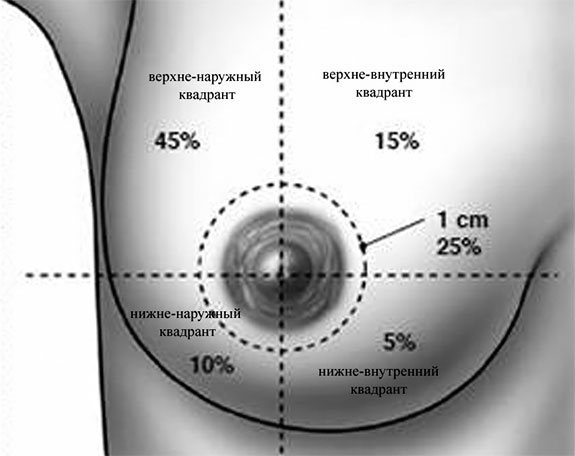
Stretch marks that appear during pregnancy become paler over time and sometimes disappear completely. To maintain breast elasticity, it is necessary to end breastfeeding correctly; this will also help maintain the health of the mammary glands. Depending on the woman’s physiology, the following changes may occur to the breasts after childbirth:
- its increase will continue after feeding is completed;
- the skin may become loose and inelastic;
- elasticity often disappears;
- in some cases, the breasts after breastfeeding are significantly reduced.
All these changes are normal variants that do not require additional examination. You should be concerned if, after pregnancy, lumps appear in the breasts or if strange discharge from the nipples bothers you.
Menstruation and dark nipples
Menstrual bleeding is considered a sign of normal functioning of a healthy female body. In women, this period proceeds differently: regularly and painlessly as normal, or with pain and cycle disruption.
If your breasts have enlarged, the sensitivity of your nipples has changed, you have stepped into the second half of the cycle, that is, into the ovulatory period. The time before your period is a period of rampant hormones and associated changes. After ovulation, with the onset of bleeding, the discomfort should stop.
If every month your pink circles turn into brown, your bust ache, but the gynecologist or mammologist did not find any abnormalities, such manifestations can be considered a variant of the norm.
If changes appear unexpectedly, your bust hurts a lot, or secretions ooze from your nipple, consult a doctor. It is not normal!
Manifestations of pathological changes in the nipples
Nipple changes during pregnancy may not always be considered normal. The appearance of itching, white or dark plaque, sharp lightening of the nipples or the appearance of an unpleasant odor are pathological phenomena that should be immediately reported to the doctor managing the pregnancy.
Changes in the nipples during pregnancy occur in almost every expectant mother and do not threaten her health, except in rare cases. With repeated pregnancies, changes usually appear earlier, and their intensity depends on hormonal levels. Changes take place after the birth of the baby and the end of breastfeeding, when hormone levels return to normal.
Reasons for changes
After fertilization of the egg, the female body undergoes hormonal changes that contribute to the preservation and successful development of pregnancy. The concentration of previously released hormones changes, estrogen and progesterone begin to be produced more actively, which affects the mammary glands and causes changes in the nipples during pregnancy. It is these changes that often become the first signal of conception.
As a result of the effects of prolactin, pregnant women's nipples become larger and more sensitive. The mammary glands change throughout pregnancy, preparing for lactation.
Colostrum production during pregnancy
Already from the second trimester, a pregnant woman may notice the release of colostrum from the nipples (clear, whitish or yellowish liquid), although most often this occurs closer to childbirth, in the third trimester. Hormones are again to blame for this, as they prepare the breasts for early feeding.
If you notice droplets of colostrum on your nipples, then under no circumstances squeeze it out of your breasts. Just pat dry carefully and be sure to maintain good hygiene by showering twice a day. If the need arises, you can use chest pads. By the way, it is very useful to lubricate the nipples with a drop of colostrum - this prevents them from drying out and prevents the formation of cracks during feeding.
Why do pregnant women experience darkening of their nipples?
Many women are interested in the question of what causes and why the color of the areola changes during pregnancy. In addition to the fact that the nipples darken at this time, a dark line appears on the stomach, changing the shade and area of the labia. Expectant mothers may develop age spots on their faces, especially after exposure to the sun.
There are three main types of cataracts, affecting different parts of the lens. Posterior subcapsular cataracts, nuclear cataracts in the center of the cortical cataract of the lens on the side of the lens, which appear as small stripes. Those with nuclear cataracts may briefly see their vision improve. This feeling is sometimes called a "second glance."
As cataracts become more advanced, they begin to darken with a yellow or brown tint. This begins to affect night vision and makes certain nighttime activities, such as driving, more difficult. In fact, a study conducted at Curtin University in Australia found that cataract treatment reduced the risk of motor vehicle accidents by 13 percent.
Experts explain this phenomenon by hormonal changes and the active deposition of melatonin produced by the fetus. It is also believed that skin pigmentation can be affected by stress and a deficiency of B vitamins. A lack of folic acid can also cause such changes in the skin at this time.
So why might nipple halos turn dark?
If you suspect you have cataracts, be very careful at night and do not drive when your vision is compromised.
Photosensitivity is a common symptom of cataracts. According to the Mayo Clinic, glare from bright lights can be painful, especially for those with posterior subcapsular cataracts. These types of cataracts start at the back of the lens, blocking the path of light and often interfering with your vision. Cloudy lenses can cause light entering your eye to diffraction. This may cause a halo to appear around light sources. Rings around each light, sometimes in very different colors, can make driving difficult. This is another reason why driving at night, especially when there are lights and headlights, can be dangerous if you have cataracts.
It has been noticed that in fair-haired women with fair skin, the nipple areola does not darken as significantly during pregnancy as in dark-haired women with darker skin.
When does nipple darkening begin in pregnant women? On average, swelling of the mammary glands and increased pigmentation in many women expecting a baby occurs in the fifth week. Some women do not notice such changes at all, since the shade of the areola darkens very slightly. This largely depends on the degree of sensitivity of the body to hormonal surges.
If your nipples peel, dry and crack during pregnancy
If you often need stronger glasses or contacts, you may have cataracts.
Just buying a strong pair of reading glasses from the drugstore won't solve the problem. Contact your ophthalmologist if your vision changes quickly. You may have cataracts or another eye condition that would benefit from surgery. As cataracts progress, protein clumps, clouding of your lens may turn yellow or brownish. This causes all light entering your eye to have a yellow tint. This changes the appearance of the color and reduces your ability to distinguish colors.
Reviews from expectant mothers about changes in breasts and nipples during pregnancy
In the early stages, my breasts hurt terribly - I couldn’t turn over in bed, I woke up in pain, and my nipples felt like they were burned.
Sofia
https://deti.mail.ru/forum/v_ozhidanii_chuda/planirovanie_beremennosti/mogut_li_bolet_soski_pri_beremennosti/
During the 1st trimester, my breasts hurt a little, and my nipples immediately became sensitive and still are, but my breasts no longer hurt.
K_Katerina
https://eka-mama.ru/forum/part23/topic198930/?PAGEN_1=3
And I realized that I was pregnant because my nipples darkened and enlarged. This was in the 3rd week. After that they became larger and darker. Just chocolate, although I myself am fair-skinned.
OLaLa
https://www.baby.ru/community/view/22562/forum/post/1117262/
During my first pregnancy my breasts hurt a lot, during my second they didn’t hurt at all, but in both cases they got bigger.
Pine nut
https://www.u-mama.ru/forum/waiting-baby/pregnancy-and-childbirth/283458/
It seems to me that my breasts are almost not growing at all, although it’s already 11 weeks... it’s just that many people write that they are getting heavier, fuller, hurt, the bras are no longer the right size... but mine seems to be the same... although the doctor said that it seems to be a little bit bigger I have, but I don’t really feel it myself...
Red_Fish
https://forum.forumok.ru/lofiversion/index.php?t47214.html
The breasts haven’t changed much... they’re a little swollen, and it’s especially bothersome at night. Well, nipples stick out at any time of the day
iolka1981
https://www.babyplan.ru/questions/8212-grud-vo-vremya-beremennosti/#ixzz5TiqDC8NV
Pain in the nipples during pregnancy. How to alleviate the condition?
There are no ointments and creams that will help reduce the sensitivity of a pregnant woman's nipples, so all methods that do not cause harm are good.
- "Ventilation".
Taking air baths has a beneficial effect on the entire body as a whole, and on the mammary glands in particular. You can “harden” your nipples in this way from the first weeks of pregnancy.
- The right underwear.
The bra should be made only from natural fabrics. During pregnancy, it is advisable to exclude from your wardrobe lace underwear, which, when worn, causes friction and discomfort in the area around the nipple. In pharmacies and maternity clothing stores you can purchase special underwear that does not restrict movement, supports the breasts and allows the skin to “breathe”.
- Personal hygiene.
There is no need to wash your breasts several times a day. If you experience discharge or pain in your nipples during pregnancy, just wipe your breasts with a clean, damp towel. It is recommended to wash the mammary glands with soap no more than once a day, so as not to dry out the delicate skin in this area and cause cracks.
IMPORTANT!
Frequently massaging or rubbing your nipples with a towel is thought to reduce sensitivity and help prepare your breasts for feeding. However, such methods are not suitable for all women; moreover, massaging the mammary glands is contraindicated for some pregnant women. Stimulation of the nipples can provoke contractions of the uterus, and as a result, the threat of premature birth.
Why nipples hurt during pregnancy is a difficult question that requires an integrated approach. A healthy lifestyle and following all the recommendations of your doctor will help you cope with this problem and set yourself up for a happy and carefree pregnancy.

